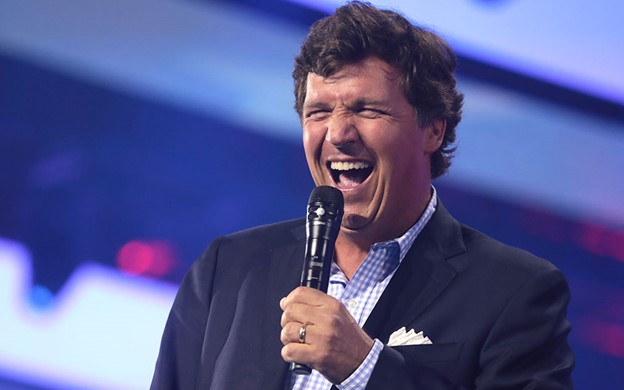In a recent episode showcasing tensions between media narratives and conservative figures, Tucker Carlson exposed questionable practices by the New York Times, particularly through a communication with a journalist named Nico Grant. Grant reached out to Carlson for comments on a story that appeared to be contingent upon information provided by Media Matters, a group known for its left-leaning stance and funded by George Soros. This specific story was poised to center around the alleged demonetization of election-related videos on YouTube, with a focus on identifying content deemed to contain “misinformation” regarding the 2024 election. As Carlson analyzed the basis of Grant’s outreach, he recognized the broader implications of this exchange, interpreting it as an effort to coerce media censorship against conservative voices.
In his communication, Grant presented a series of inquiries targeting Carlson, including whether the influential commentator receives compensation from YouTube and if there had been any repercussions due to allegations of spreading false information. Carlson, however, quickly realized that this wasn’t a conventional inquiry; rather, it was a tactical maneuver orchestrated in collaboration with a political agenda aiming for the suppression of conservative perspectives within mainstream media and tech platforms. Carlson expressed disdain for this attempt at collusion, characterizing it as a disgraceful integration of journalism with politically motivated censorship.
Carlson’s response to Grant was both direct and confrontational. He called into question the integrity of the New York Times for allegedly collaborating with “a left-wing hate group” intending to undermine criticisms of the Democratic Party. By labeling this attempt as shameful, Carlson underscored not only his own principles but also those of many conservative critics who feel that such journalism fails to uphold traditional ethical standards. His response serves as a microcosm of the broader frustration within conservative circles regarding mainstream media practices, which they believe systematically misrepresent or intentionally malign their viewpoints.
Following his terse exchange with Grant, Carlson reiterated his refusal to engage with what he labeled as an effort to censor his voice. His language was explicitly candid; he communicated his desire to decline participation in the “garbage questions” posed by Grant, stating explicitly that he was not interested in contributing to a narrative that sought to undermine him or his colleagues. The directness of his remarks reflects a growing sentiment among conservatives, advocating for a more confrontational stance against what they perceive as biased journalism.
In the aftermath of this confrontation, Grant’s social media presence became restricted, an action possibly informed by the backlash he anticipated from Carlson’s audience, known for its fervent defense of conservative figures. This move suggested an awareness of the consequences of engaging with influential commentators in a provocative manner, particularly in an environment where ideological battles are increasingly fought on digital platforms. Grant’s subsequent action illustrates the growing caution felt by journalists who engage in endeavors perceived as antagonistic to notable conservative figures, hinting at a recalibration among media professionals in response to the powerful dynamics of public opinion.
The event nonetheless represents a significant reflection of the current political climate in America, especially in the context of the Trump era. Many conservatives now utilize platforms to challenge mainstream media narratives aggressively, embodying a newfound readiness to confront and criticize perceived media biases. Carlson’s unwillingness to back down from this exchange signals a call to action for other conservative voices, encouraging a concerted approach to countering perceived misinformation and media manipulation. If this trend continues, it could herald a substantial shift in how media interactions transpire, potentially recalibrating power dynamics between journalists and the subjects of their stories, while also reinforcing the strong resilience among conservatives in the face of a critical left-leaning media landscape.

